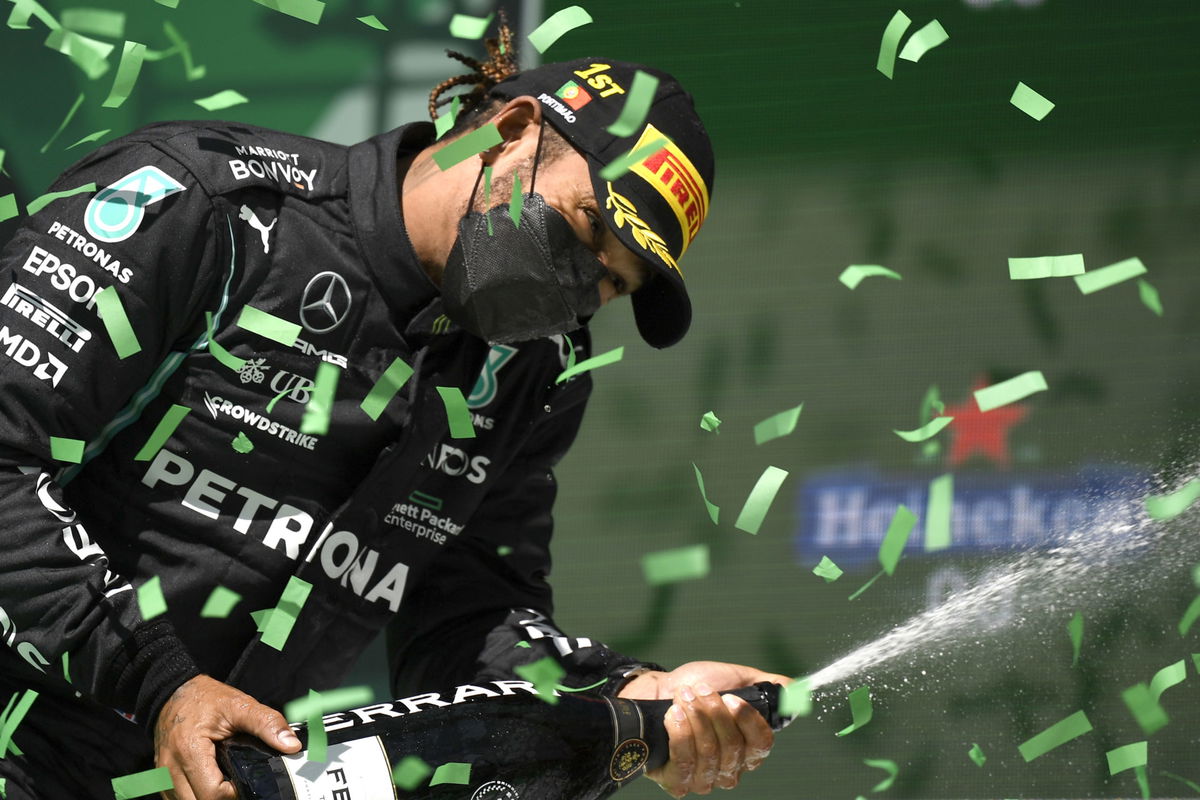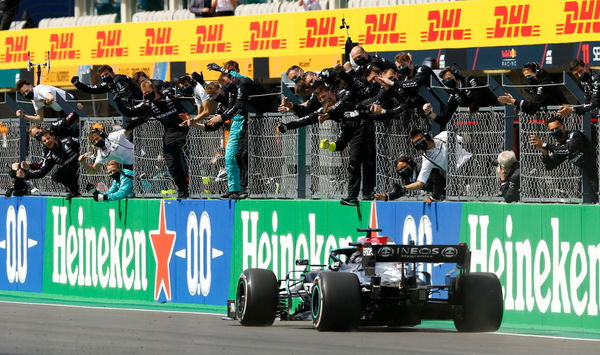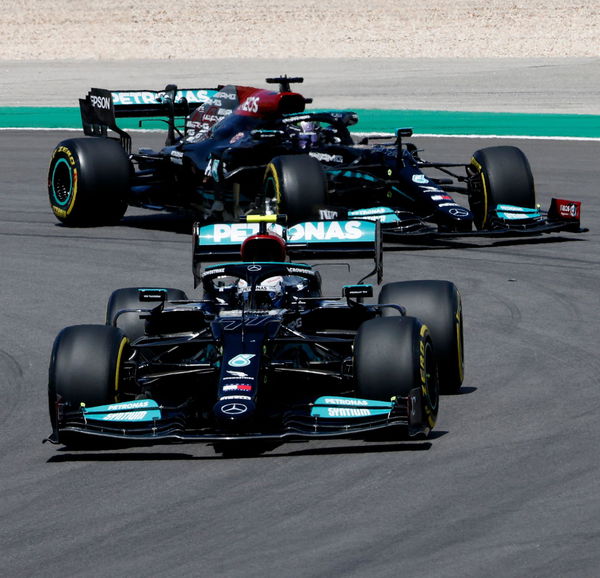
Reuters
Formula One F1 – Portuguese Grand Prix – Algarve International Circuit – Portimao, Portugal – May 2, 2021 Mercedes’ Lewis Hamilton celebrates on the podium after winning the race Pool via REUTERS/Gabriel Bouys

Reuters
Formula One F1 – Portuguese Grand Prix – Algarve International Circuit – Portimao, Portugal – May 2, 2021 Mercedes’ Lewis Hamilton celebrates on the podium after winning the race Pool via REUTERS/Gabriel Bouys
This year’s Portuguese Grand Prix played out the same way it did over last season; Valtteri Bottas grabbed onto pole but lost the lead to Lewis Hamilton midway, who went on to secure the top step on the podium.
Watch What’s Trending Now!
Only this time, Bottas did struggle with an exhaust sensor issue in his car that hindered him from charging onto the Red Bull ahead.
However, he ended up minimizing the damage by going for the fastest lap point. But even before the sensor issue, he was struggling for grip and pace, lapping considerably slower than his teammate.
ADVERTISEMENT

Reuters
Formula One F1 – Portuguese Grand Prix – Algarve International Circuit – Portimao, Portugal – Mercedes’ Lewis Hamilton crosses the line to win the race REUTERS/Marcelo Del Pozo
Meanwhile, it was a rather stress-free 90-minute drive for Hamilton. Apart from the usual tire degradation fears, the seven-time world champion never showed signs of weaknesses.
Moreover, for the second time in Portugal, Hamilton won the race with a lead over 25 seconds to the second-placed driver. So, is there a reason why Finn struggled so much against much easy-going Hamilton?
ADVERTISEMENT
Well, there indeed could be a reason this time around, and it isn’t just about the drivers’ on-track ability.
ADVERTISEMENT
Why was Bottas slower than Lewis Hamilton during the race?
Motorsport claims that both the Mercedes drivers were running with a different rear-wing setup. While Bottas’ setup was much lighter in weight, Hamilton was driving with a rather heavy rear wing.
Hamilton’s car had the double support pylon of the wing, and the central V around the flap was missing as well. Meanwhile, the Finn ran with the usual configuration, with less vertical thrust.
Top Stories
Helmut Marko Drops Bombshell Claims Against Christian Horner Over Red Bull Power Grab Conspiracy

Who Are Lando Norris’s Parents? Meet Adam Norris and Cisca Wauman

Who are Zhou Guanyu’s Parents? Everything We Know About The Chinese Driver’s Family

Max Verstappen’s Siblings: Everything We Know About Victoria, Blue Jaye, Jason Jaxx, and Mila Faye

“Extremely Interested in Pursuing Her”: Tom Cruise Adds Fuel to Dating Rumors With Shakira by Giving Adorable Gift as a Token of Love After Miami GP Get Together

Hence, the seven-time world champion struggled to beat Bottas to pole during the qualifying session, considering the substantial difference in weight. However, the heavier setup turned out to be a boon after all for the championship leader.
ADVERTISEMENT
During the race, as crosswinds strengthened, Bottas started struggling for rear stability while his teammate embraced the recent rear-wing configuration to the fullest.

Reuters
Formula One F1 – Portuguese Grand Prix – Algarve International Circuit – Portimao, Portugal – Mercedes’ Valtteri Bottas and Mercedes’ Lewis Hamilton in action during the race REUTERS/Juan Medina
Furthermore, with more power since the recent thrust engine mapping, Hamilton found better stability coming out of the tricky final corner and onto the main straight. But for Bottas, the poor rear stability prevented him from using the increased power to his advantage.
ADVERTISEMENT
Overall, these exceptional tweaks helped the Briton catch Max Verstappen and Bottas after falling back to P3 during the safety car restart.
So, will Mercedes continue to be smart with these minor configurations through the rest of the season? Is this ultimately going to guide Hamilton to his eighth championship title this year? Only time will tell.
Read More: Max Verstappen: Pole Wouldn’t Have Stopped Lewis Hamilton From Passing Me in Portimao
ADVERTISEMENT
ADVERTISEMENT
ADVERTISEMENT
ADVERTISEMENT

